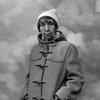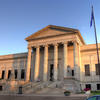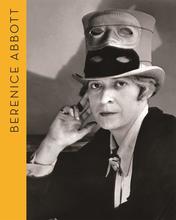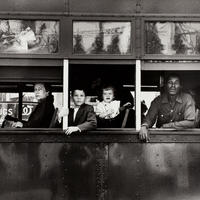More about Gunsmith and Police Department
- All
- Info
- Shop

Contributor
Berenice Abbott's Gunsmith and Police Department, 6 Centre Market Place and 240 Centre Street, Manhattan is itself "hyperreal," if you can fit the French philosophy of semiotics to the analysis of photographs.
Like many theories, Jean Baudrillard's is based on a work of art – the metaphor of Borges in the short story "Of Exactitude in Science" – a 1:1 scale map covers the surface of an entire territory, and it disintegrates, leaving the territory beneath. Derrida would use a similar example, writing about metaphors so overused that they become like effaced coins, valuable only for their metal. People often mention Jean Baudrillard as the originator of the term "hyperreal," but the person who first stamped the hyperreal coin, before it became overused, in 1941, was the scientist and photographer Abbott, a few years after her Gunsmith and Police Department, 6 Centre Market Place and 240 Centre Street, Manhattan. She would, soon afterwards, transition her career toward scientific photography, such as the image, which you have probably seen, of the slow-motion bouncing ball. "Abbott is best known for her portrait photographs taken in the 1920s and for her 1930s documentary series Changing New York. Scholars have paid somewhat less attention to her subsequent turn to science as a photographic subject, an endeavour that defined the latter half of her career."
Abbott writes, forty years before Baudrillard became famous, “when the first stroboscopic photographs were exhibited, it was evident that in them was to be seen a real hyperreality, a true fantasy beyond what the subconscious could concoct… here at last photography sees with its own eye, untouched by any memories of how painters saw in the past.” The enormous, absurd, Oldenburg-esque gun pointing away from the shop in this photo links a real relationship to a symbol, making the street scene into the photographer's fantasy. In the way Abbott stages the image, it is as if the absurd gun sculpture gives rise to the police station itself. Both the surreal and Abbott's hyperreal intervene in the mind's scripting and staging of reality, disturbing the boundary between theater and street. People responded in kind, by taking thousands of pictures of the sign in Abbott's photograph, fashioning their own hyperreal scenes.
The photograph captures a moment in the history of advertising when large, gimmicky, kitschy representations were necessary. Abbott's photograph places the "low" kitsch as "high" art, like so many Pop artists decades later. She stands in a long tradition of women whose art gave rise to movements led, decades later, by men.
Sources
- Abbott, Berenice. Guide to Better Photography. New York: Crown Publishers, 1944.
- Abbott, Berenice. New York in the Thirties. New York: Dover, 1939.
- Borges, Jorge Luis. Collected Fictions. New York: Penguin, 1999.
- Derrida, Jacques. "White Mythology: Metaphor in the Text of Phiosophy." New Literary History 6, no. 1 (1974): 5-74.
- van Haaften, Julia. Berenice Abbott: A Life in Photography. New York: W.W. Norton, 2018.
- O'Reilly, Colleen. "Pedagogical Interventions: The Physics Photographs of Berenice Abbott." The Nature of Naturalism: A Trans-Historical Examination/La nature du naturalisme: un examen transhistorique 41, Number 2 (2016): 77-90.













